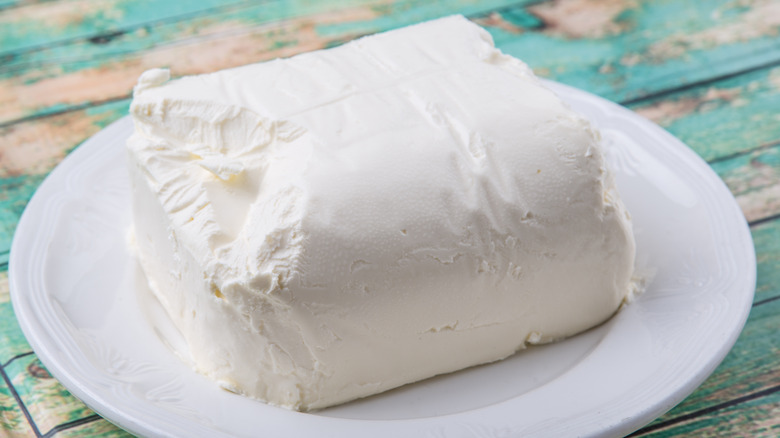Here's How Long Cream Cheese Can Safely Sit Out On Your Countertop
When your recipe calls for softened cream cheese, you might be tempted to leave that chilly block on the counter overnight to be ready when you are, but that would be a big food safety mistake. Cream cheese has a high moisture content and low acidity, creating the perfect conditions for bacteria to multiply to an unsafe level when left at room temperature for too long. The United States Food and Drug Administration (FDA) recommends all foods that should generally be refrigerated spend no more than two hours out of refrigeration before you use them, and that includes cream cheese.
Cream cheese is a fresh cheese, made from milk that is heated and then acidified to cause curds to form. The curds are drained for several hours and then the cheese is ready to eat. Any naturally occurring bacteria in the environment could be present in low numbers due to this minimal processing, ready to grow under the right conditions. By comparison, a harder cheese like cheddar starts exactly the same way, but the curds are heated, salted, and pressed until very little moisture remains. The lack of moisture and time spent in pressing and aging the cheese makes cheddar and other hard cheeses an unfriendly environment for bacteria, which is why they can spend more time out of the refrigerator.
Safer softening
Cold cream cheese is harder to work with and can make lumpy cheesecake and frosting, so we've got alternate methods for softening to recommend. A few seconds in the microwave or a dunk in warm water will get you on your way quickly. You can still choose to soften at room temperature, but use a timer to remind yourself how long the block has been on the counter. It's important to know that you can't detect bacterial growth in food that's been left out too long– there is no smell or visible sign of this type of spoilage, and that's why it's so important to follow the two-hour guideline if you chose to soften at room temperature.
These guidelines apply to both blocks and tubs of cream cheese, flavored or plain. Many tubs of cream cheese are whipped, making them softer at refrigerator temperature. That's perfect for a bagel or sandwich spread, so no need to leave it out on the counter. But don't forget that whipping cream cheese adds air which can change the texture of baked recipes. Your basic block of cream cheese is most useful when soft, but staying safe should be top of mind.

